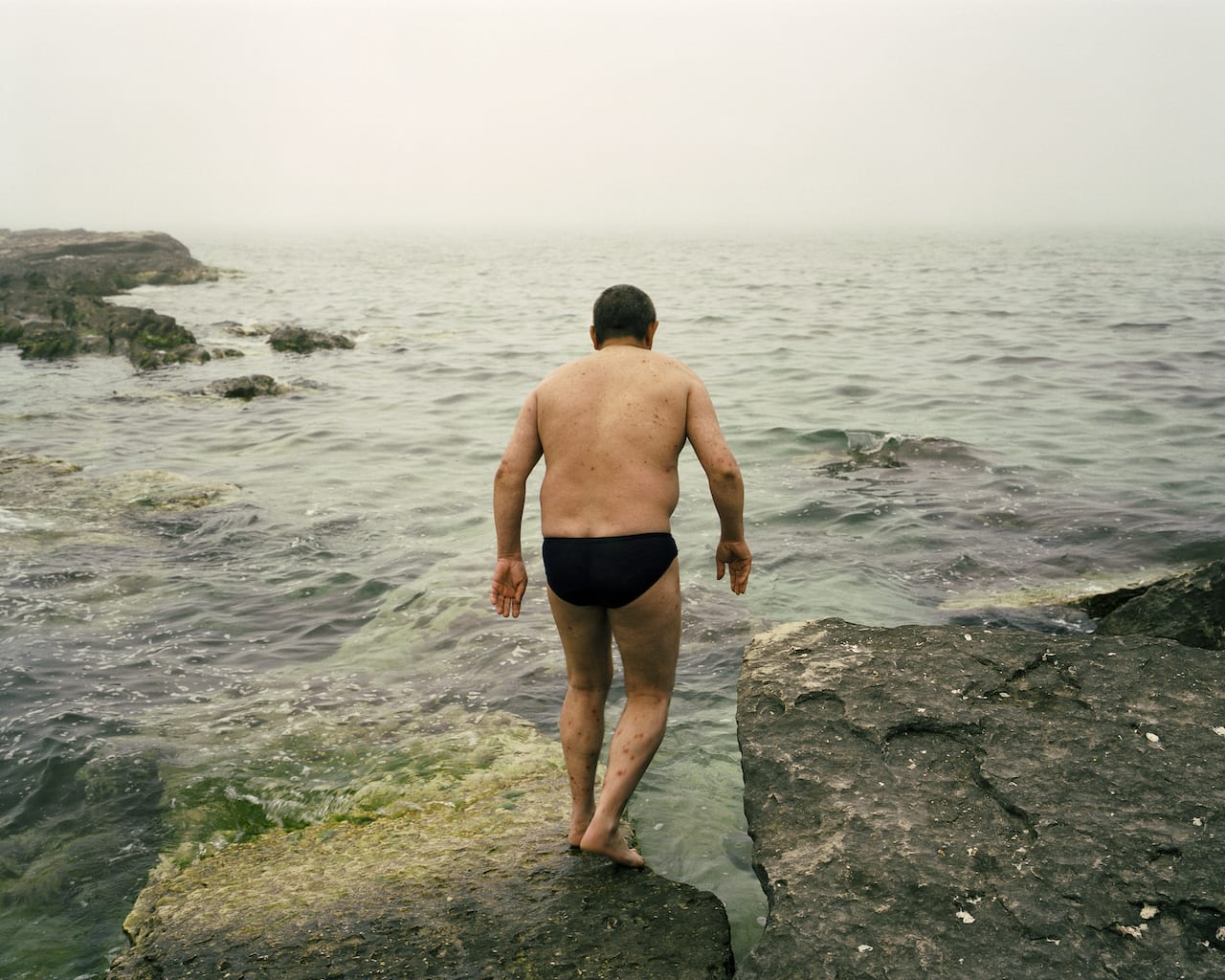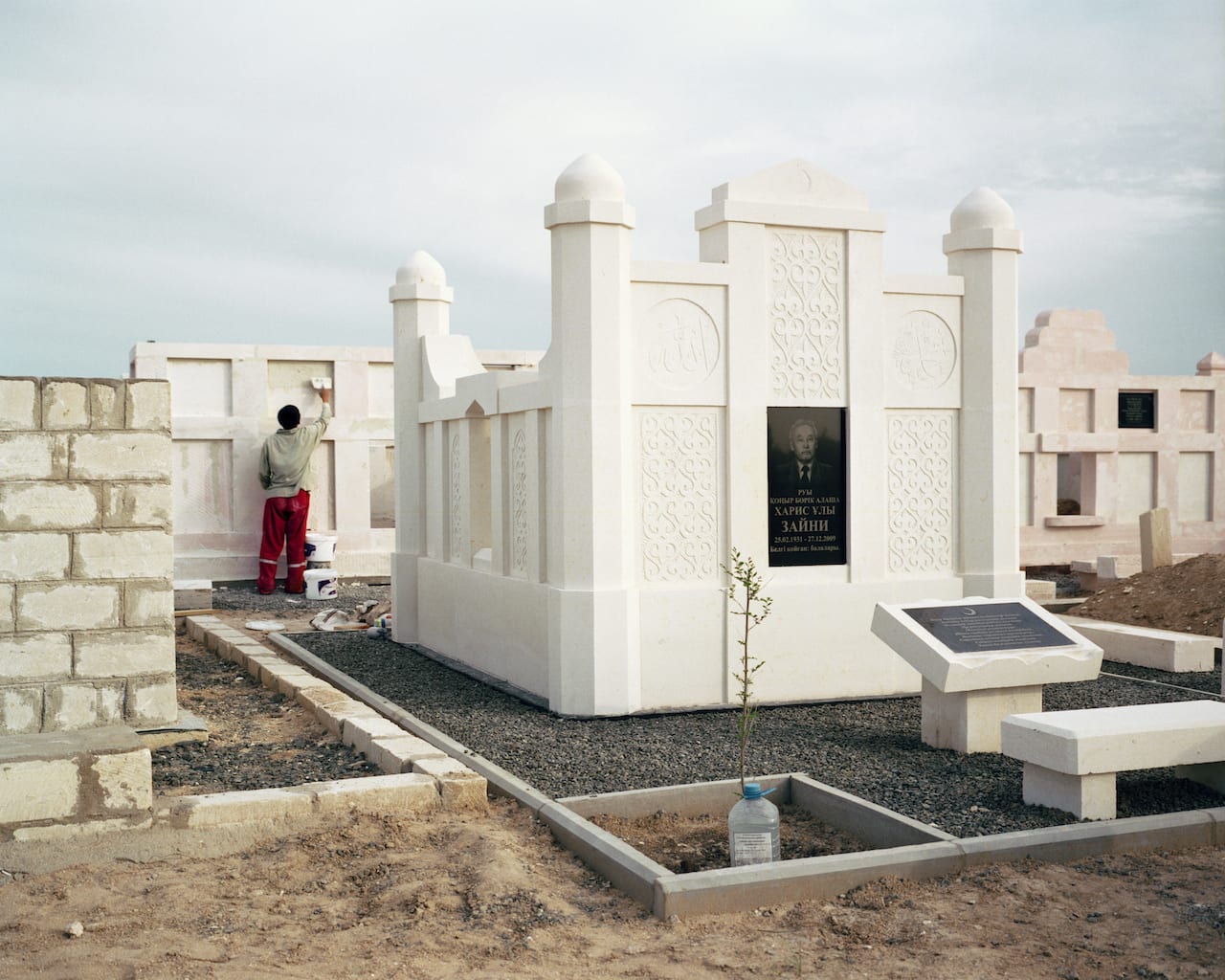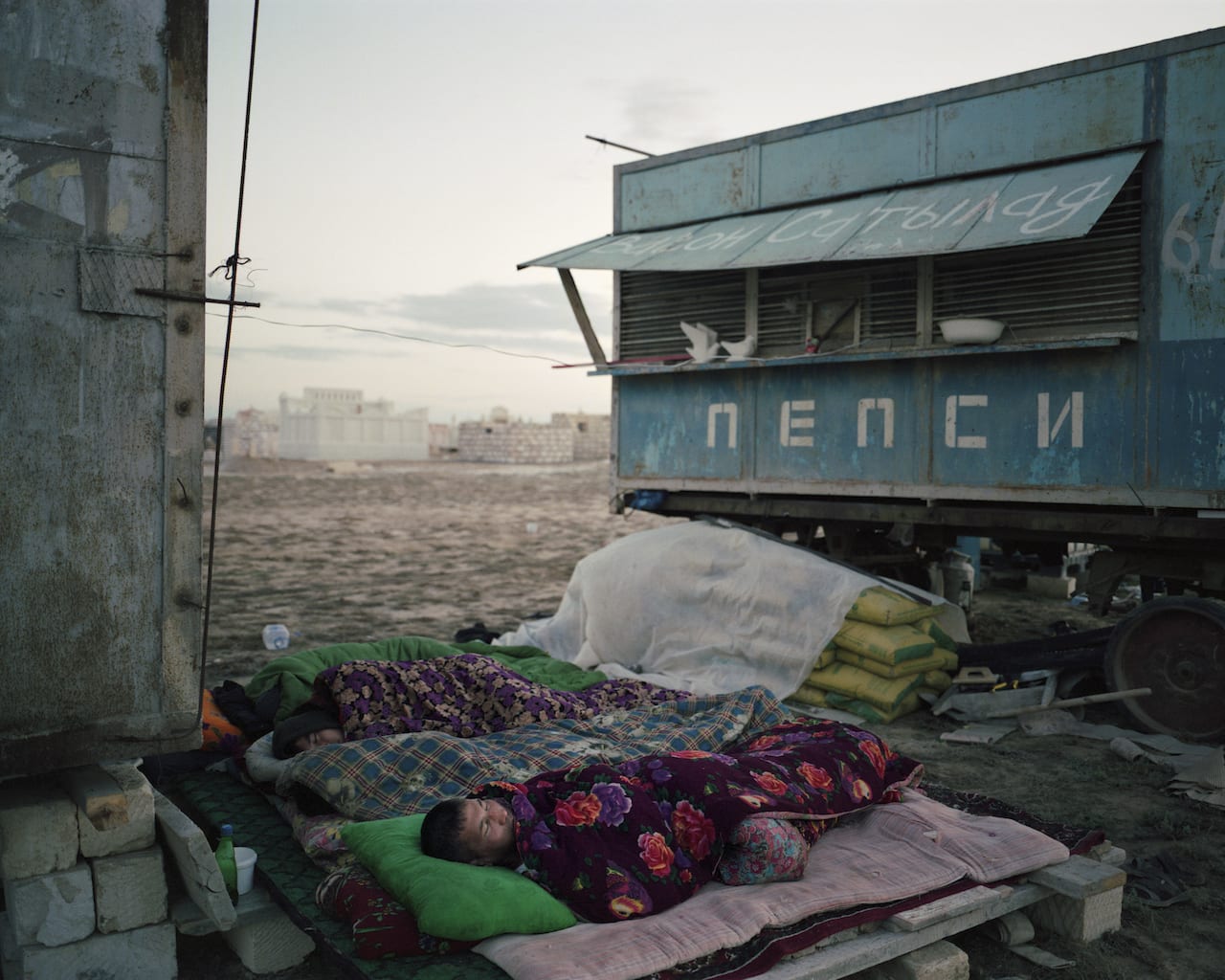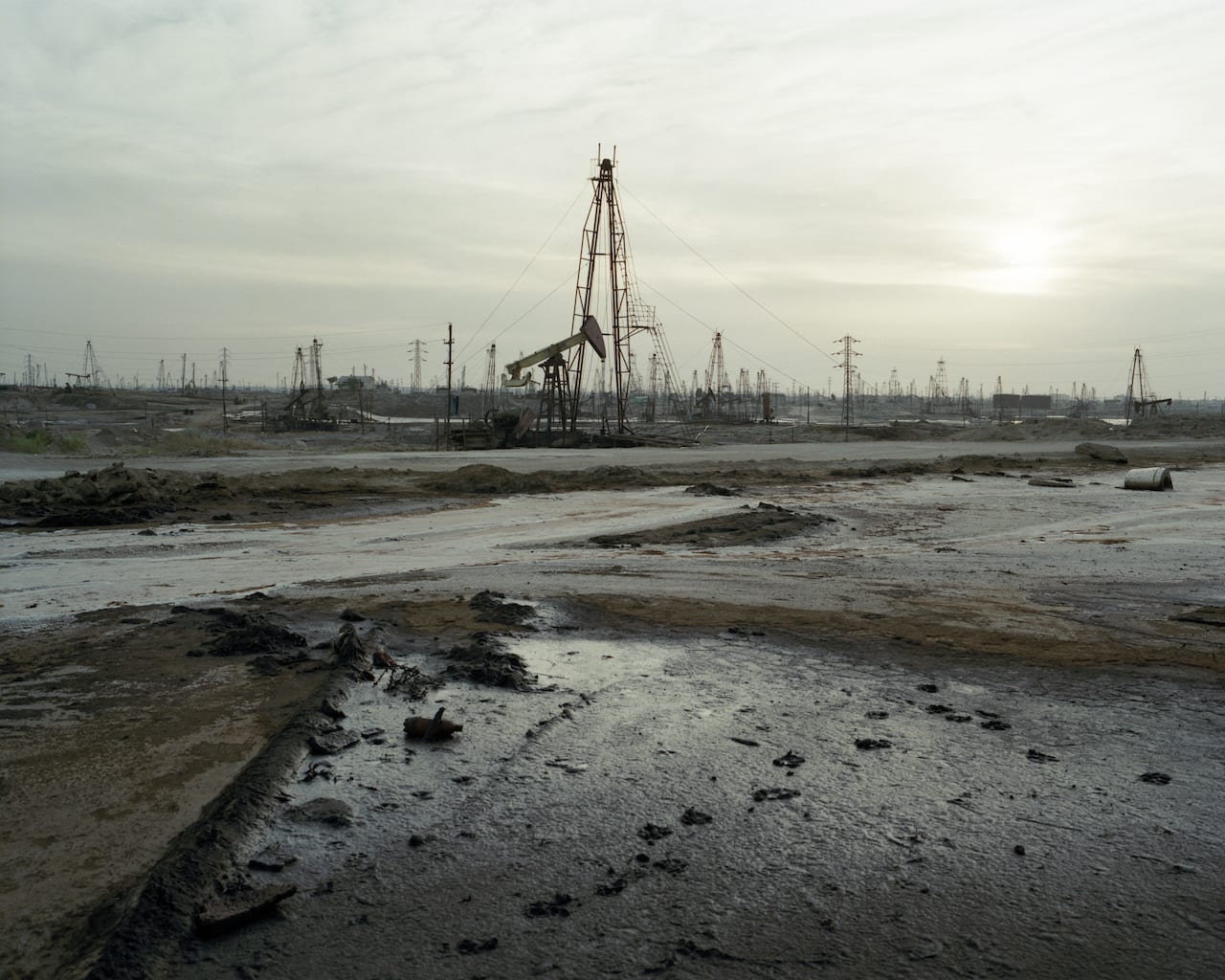Chloe Dewe Mathews won the series category of BJP’s International Photography Award this year with her lyrical images from Caspian. But unlike many of the other entrants, she’s never studied photography. Instead she graduated in fine art at The Ruskin School of Art, Oxford University, then worked in the film industry for a few years before teaching herself how to use a camera.
“For me, photography became a solution because I could be independent, spontaneous and more creatively engaged,” she says. “In feature films, you always work within a structure and you have to plan every shoot carefully; I liked the freedom you have with a stills camera. Fine art gives you more independence, of course, but it can also become too self-referential, so I was attracted to documentary photography because it felt more outward looking. I was keen to explore what was going on around me, as well as stepping out into the wider world.”
In the four or so years since taking up photography, Dewe Mathews has shot banger boys racing cars in small town Britain, gypsies on pilgrimage in the French town of Saintes-Maries-de-la-Mer, and a community of British orthodox Jews holidaying in Aberystwyth. But in January 2010 she and her boyfriend decided to really challenge themselves and make a trip to an area they knew very little about, and spent nine months travelling through western China, Kyrgyzstan, Kazakhstan, Azerbaijan and Georgia.
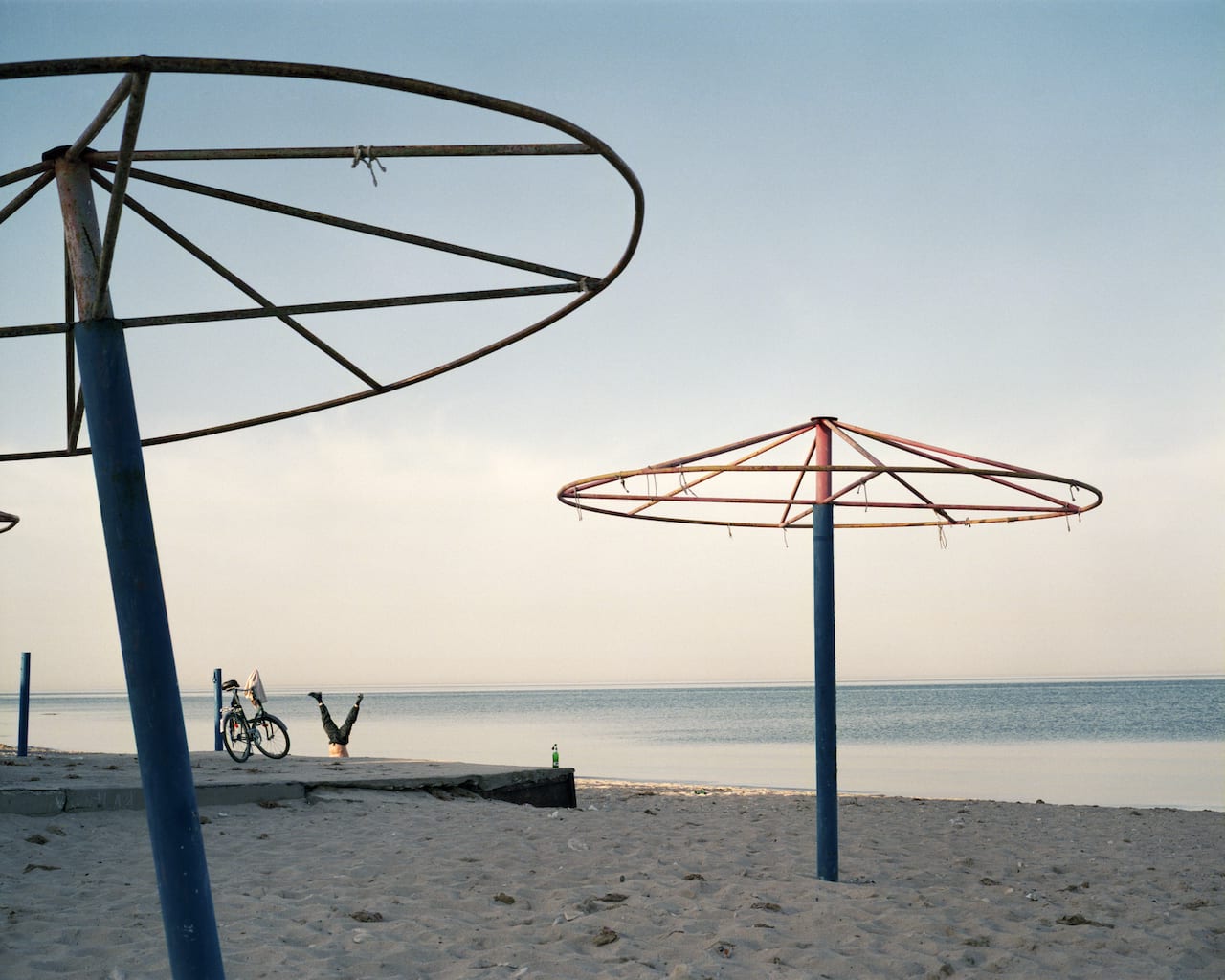
Dewe Mathews came back with many photographs and three stories, one on Western China’s Muslim Uighur minority, another on the Aral Sea, and another on the Caspian, the world’s largest inland sea, and the oil that is slowly, but surely, changing the regions around it.
Dewe Mathews’ boyfriend is a painter and went on the trip to make sketches and studies, but he also speaks Russian and was able to act as an informal translator. They camped and hitchhiked rather than staying in hotels, partly because it was cheap but also because it helped them meet people – an approach that allowed Dewe Mathews to find her story on the Caspian Sea and the oil industry.
“With the Uighur Muslims, I had read about the story before going to China, and had an idea of what I wanted to photograph,” she says. “But in Kyrgyzstan, Kazakhstan and Azerbaijan, I liked the fact I knew next to nothing about the countries, and had very little sense of what they looked like beforehand.
“I enjoyed finding small stories that I felt were representative of the wider picture, rather than going in with preconceived ideas of what to shoot, informed by what I’d found online. When you shoot for commissions, everything needs to be thoroughly planned in advance, so for this project I wanted to react instinctively to what we encountered. I had seen a photograph of a guy bathing in oil near the Caspian Sea, though, then while we were travelling, the Deepwater Horizon oil disaster happened.
“Every café we passed was showing TV footage of the spill and birds covered in oil crawling out of the slick; that made the idea people would voluntarily bathe in it all the more baffling. I started to ask people if they knew about the practice, until finally we found someone who put us in the right direction.”
Eventually she found her way to Naftalan, an area in Azerbaijan in which people have bathed in naturally-found crude oil for hundreds of years. In the Soviet era, sanatoriums were built in which people could take the treatment and, although many of the clinics fell on hard times with the dissolution of the USSR, bathing in oil has now become popular with a new generation of health-seekers.
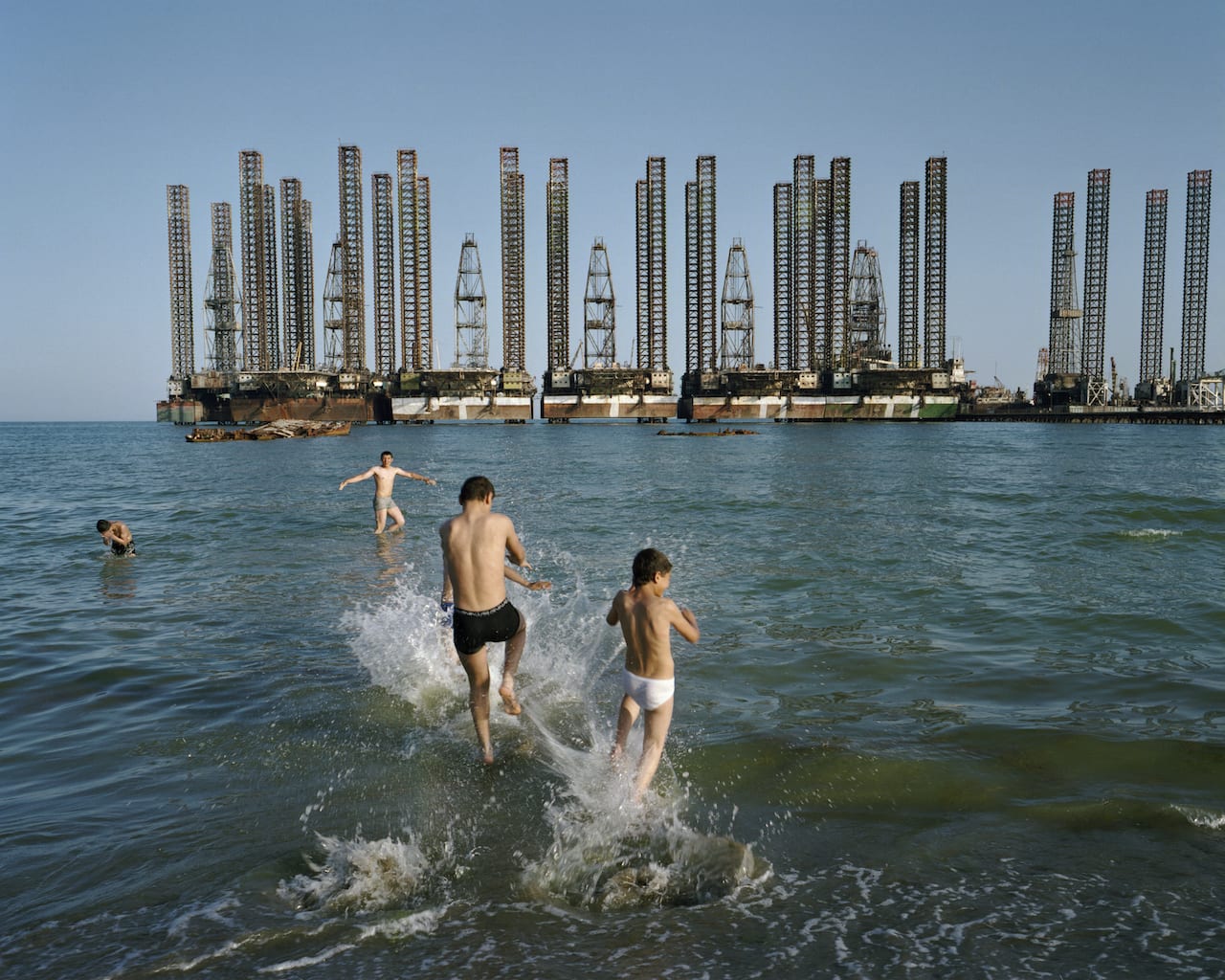
Dewe Mathews and her boyfriend couch-surfed in Naftalan and stayed with a local man who spoke English, and offered to act as a fixer and interpreter. With his help, she was able to get right inside the sanatoriums to take photographs of people receiving the treatment and, while she was careful to stay unobtrusively in the background, says the people she shot there were generally open and unembarrassed about being photographed naked.
Across the water in Kazakhstan, Dewe Mathews shot in Aktau, a port that sprang up in the 1990s’ oil boom; from there she travelled inland to Koshkar-Ata, an industrial area that’s now a dumping ground for by-products from oil and uranium mining. She found a graveyard dominated by mausoleums to oil-rich oligarchs and the migrant workers who hew elaborate graves out of stone.
“We got a bus inland and happened upon the necropolis,” she says. “Visually it was very arresting. Men dressed in white surrounded by huge blocks of white stone, which were also white, and the whole place bathed in an ethereal light. Then we discovered they were building tombs to commemorate those who had worked in the oil industry. It was exactly the type of story I was looking for.”
Dewe Mathews and her boyfriend stayed on in the area, photographing both the work and the day-to-day lives of the masons and their wives. In total she spent about a month in each country (Kyrgyzstan, Kazakhstan, Azerbaijan and Georgia), but only a few days shooting in Naftalan and a couple of weeks in Aktau a Koshkar-Ata, with a limited amount of film – travelling light and on a budget, she had 140 rolls for the whole nine months.
She came to enjoy the restriction, editing images before she took them and learning when not to take a photograph. “Sometimes I’d pick up a camera thinking, ‘That’s a photograph!’ then put it down again,” she says. “There were endless photogenic scenes, but not all of them were photographs I wanted to take.”
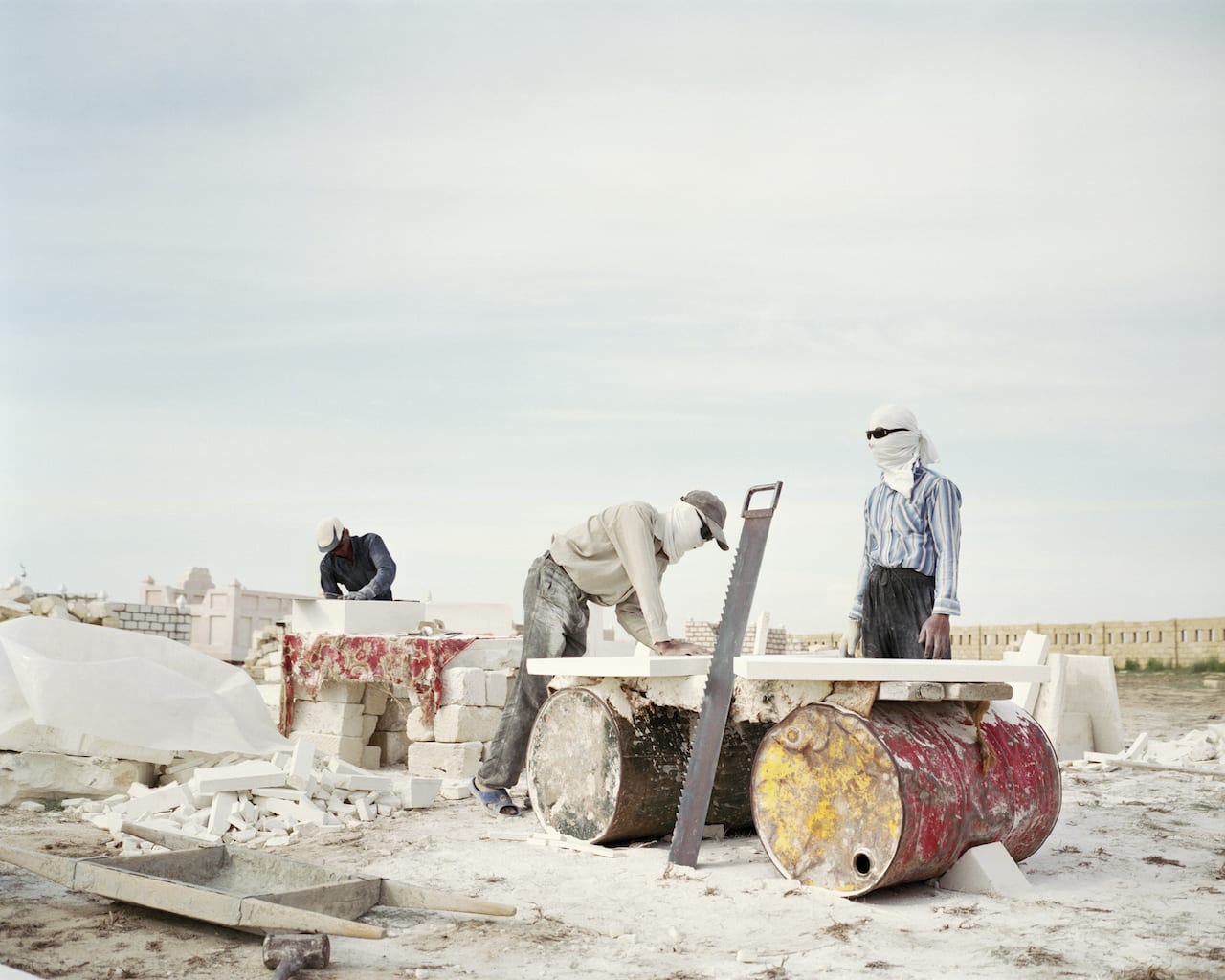
Dewe Mathews says her fine art background has had a lasting impact on her, and it shows – one of the aspects that particularly impressed the IPA judges was the aesthetic rigour of her series. All the images have a similar quality of light and are shot in complementary pastel tones, which she achieved by shooting at dawn, dusk or on overcast days, avoiding bright, direct sunlight. For her, aesthetics and information are inseparable in photography because the tone helps set how an image is interpreted; even so, she avoided adding images if they didn’t contribute to the narrative.
“I am very aware of colour and light, but there are images that look good that I haven’t included because they don’t add anything to the story,” she says.“I love the still image; the fact that you can capture a fleeting, everyday moment that, given time for contemplation, can turn something unreal.”
Shooting with a medium format Mamiya 7 she was unable to process her images until she came back to the UK, which made for some surprises. Some of the images were very different to how she had envisaged them and initially she was disappointed, she says, but after spending three months scanning and editing, she realised she had three strong stories and many one-off portraits. Her work in the region is ongoing, as she intends to develop it into Russia, Turkmenistan and Iran over the next year.
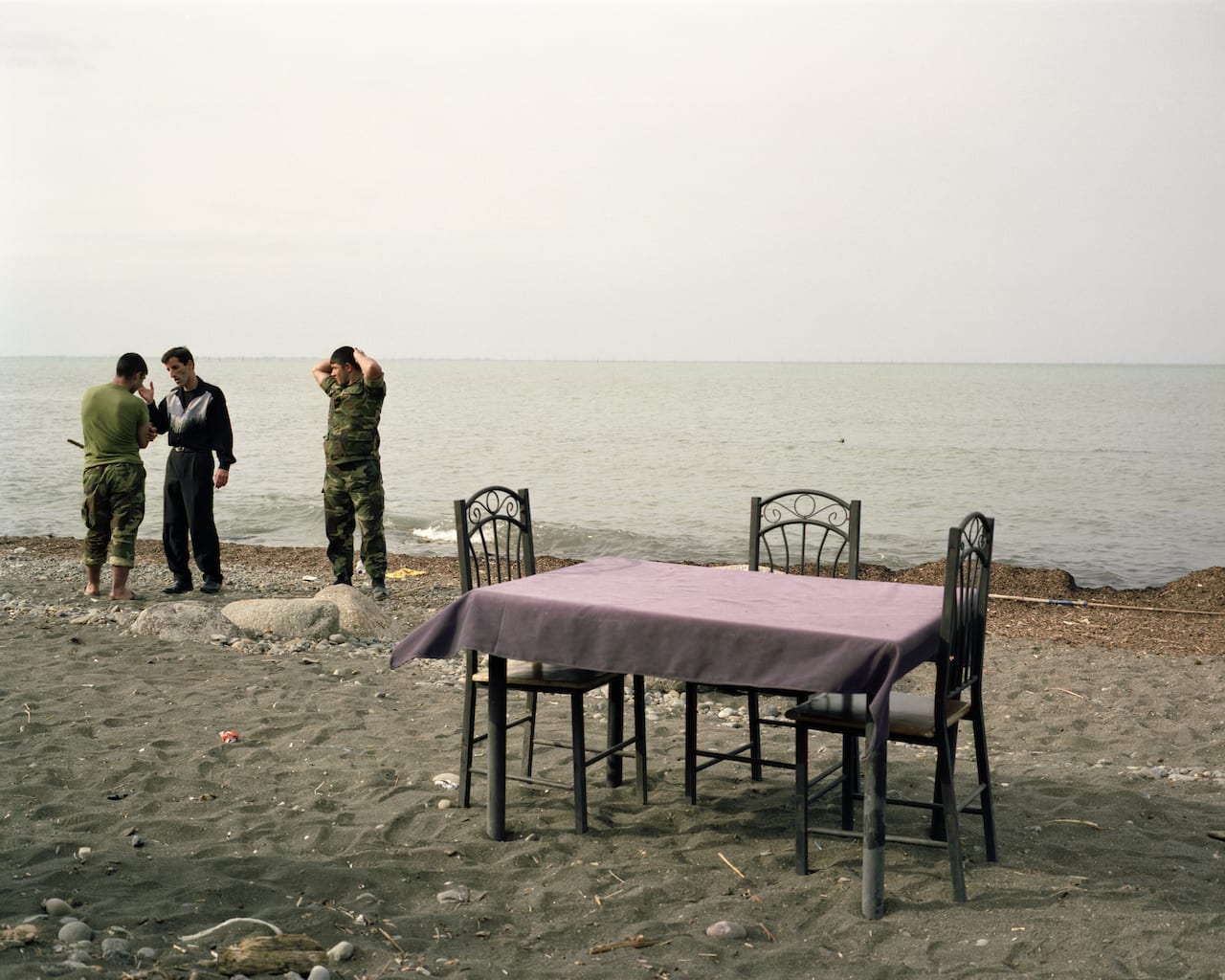
Panos Pictures invited her to join its ranks on the strength of her Uighur project and two older stories, Banger Boys of Britain and Hasidic Holiday; Caspian has been published in The Sunday Times, The Telegraph, and The New York Times. She’s also been featured in Radio 4’s Picturing Britain series, with the presenter following her to a ladies’ banger race.
Even so, Dewe Mathews says she’s very happy to have won an exhibition, having thought of Caspian as a show from the outset. “I enjoy working for magazines and newspapers; as a documentary photographer these days you need to have your fingers in a lot of pies,” she says.
“There’s no certainty in any of the areas I work in. But having shot on medium format, I’m looking forward to printing the images large and seeing them in a gallery. I suppose, having started out in fine art, I’m very used to those spaces and envisage certain projects in that environment.”
www.chloedewemathews.com Shortly after doing this interview with BJP, Chloe Dewe Mathews returned to the Caspian region, and ultimately worked in the area for five years. Her much-expanded project will soon be co-published as a book by Aperture and Peabody press, titled Caspian: The Elements https://aperture.org/shop/chloe-dewe-mathews-caspian-the-elements/
